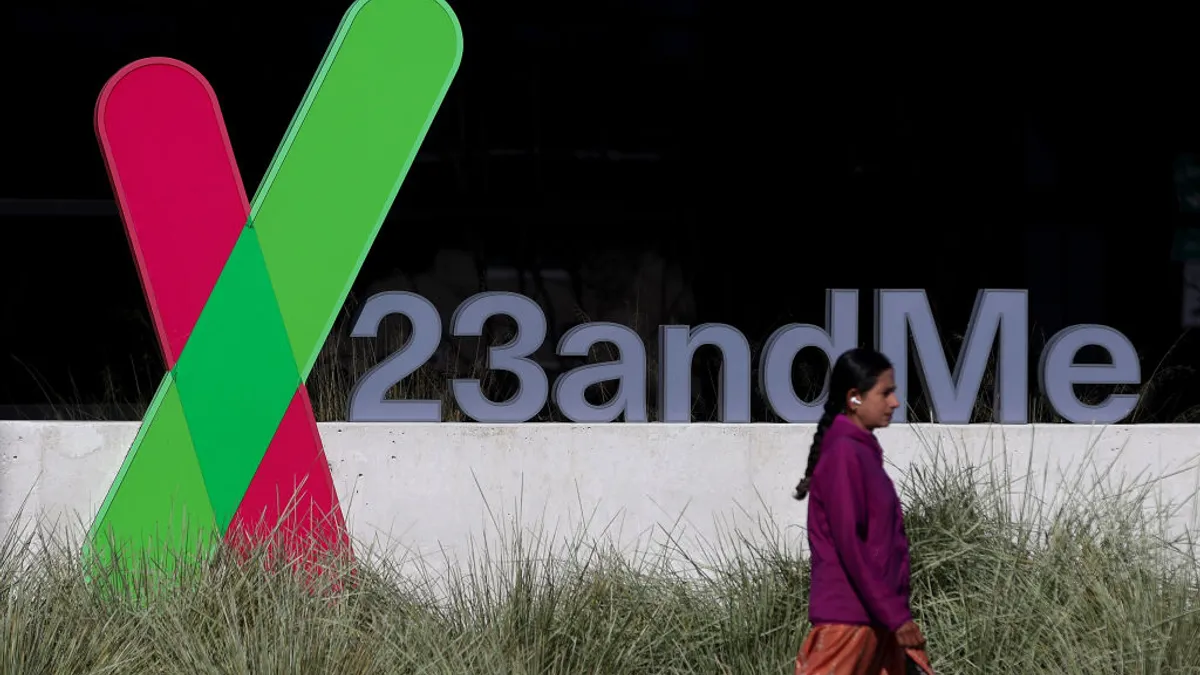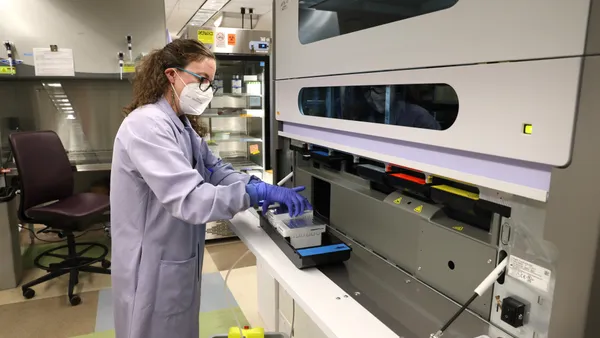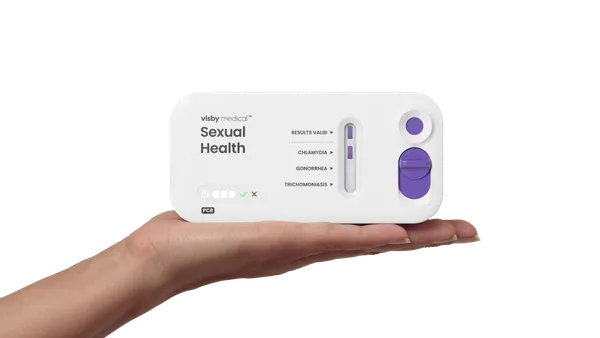There's one surefire way to diagnose a liver disease that, by some estimates, affects tens of millions of Americans — and it uses a giant needle.
Liver biopsy is considered the gold standard for detecting nonalcoholic steatohepatitis, or NASH, an illness where fat built up in the liver causes swelling, scarred tissue and, in severe cases, cirrhosis. Yet concerns are growing that without better diagnostic tools, many patients won't gain access to NASH drugs for years to come.
"There's a really intense effort now to use every means necessary or possible to establish a diagnosis of NASH without biopsy," said Scott Friedman, chief of the liver diseases division in the Icahn School of Medicine at Mount Sinai.
Friedman, along with more than a dozen doctors, analysts and industry executives who spoke with BioPharma Dive, noted how biopsies, while a valuable source of information, have many drawbacks. They're invasive and expensive, often costing thousands of dollars. And though generally safe, they carry a small risk of infection and accidental damage to other organs.
The procedure can also be painful, which may deter patients since NASH is usually asymptomatic until its more advanced stages.
But even if all 10 million to 30 million U.S. patients thought to have NASH agreed to a biopsy, there aren't enough liver doctors to perform them. As of April 2018, around 16,400 gastroenterologists held valid certificates from the American Board of Internal Medicine. Just a fraction of those do liver biopsies.
Healthcare providers therefore expect liver biopsies will present significant barriers to the uptake of any NASH drugs approved, especially if payers make the tests a requirement for coverage and reimbursement. That may humble industry excitement over the prospects of NASH drugs to bring in billions for pharmas.
"That's what we're all afraid of, including the pharma people," said Douglas Dieterich, a professor of medicine in the liver diseases division of the Mount Sinai School of Medicine.
The side effects of no drugs
Physicians and analysts generally agree that when the initial wave of NASH drugs arrive, which could come as early as 2020, the first patients treated will be those with serious liver scarring. Conversely, drug therapy might not be the preferred option for patients with less severe fibrosis.
Defining a patient's fibrosis stage is therefore critical, both for physicians looking to identify their sickest patients and drug companies trying to understand the size of the early NASH market. Biopsies have been the best identification tool so far — but aren't gaining traction among some doctors.
"Without a treatment, it's hard to justify a mad rush to screen everybody," said Friedman, who also consults for more than two dozen companies developing liver drugs or devices.
He's not alone in that view. Zachary Henry, a hepatologist at University of Virginia Health System, tries to avoid giving biopsies at the weight management and general hepatology clinics where he practices, unless he suspects a patient has advanced fibrosis and could benefit from enrolling in a clinical trial.
Henry reasons that without an approved drug on the market, the recommended treatment is the same for most NASH patients: a better diet and more exercise. "Treatment options currently are limited basically to lifestyle modification," he said in an interview. "A liver biopsy isn't really going to change that."
Brent Tetri, who works at a hospital-based clinic at St. Louis University, says he sees 15 to 20 NASH patients every week and does biopsies quite often, though his clinic is biased in that it attracts patients interested in joining clinical trials.
Still, Tetri told BioPharma Dive he typically takes one of two approaches with patients suspected of having NASH: either caution that a biospy will be needed if they don't make lifestyle changes, or conduct a biopsy to convince them they're on the path to cirrhosis.
"The NASH market, if we want to reach its potential, is going to have to get away from the liver biopsy."

Dean Hum
Chief Operating Officer, GenFit
Fewer biopsies means more fragmented data on how much of the NASH population has simple fatty tissue versus more serious liver damage. Without that data, it is difficult for doctors or drug companies to know the number of patients most in need — and most likely to receive — NASH medicines.
"We cannot even scratch the surface of risk-stratifying patients by liver biopsy," Manal Abdelmalek, a professor of medicine at Duke University, said in an interview. "There aren't enough providers or enough liver biopsies done in this country to be able to make a break in the population at risk."
And that lack of biopsy data could spell trouble for drug companies looking to tap into NASH, a market some on Wall Street now predict will be slower to grow and less lucrative than the more bullish estimates which were initially floated.
Notably, the National Institute of Diabetes and Digestive and Kidney Diseases, which funds the NASH Clinical Research Network, does not have statistics on the number of U.S. patients with NASH or a precursor disease named NAFLD, nor does it have statistics on the breakdown of NASH patients by fibrosis stage.
Despite the need for additional data, SVB Leerink analyst Pasha Sarraf doesn't expect a rapid increase in liver biopsy use anytime soon. He argues it's unlikely the healthcare system is "willing to pay or ready to accept all the risks associated" with doing thousands more of the procedures.
"To prescribe these drugs, we're going to have to replace biopsies as the gold standard," Sarraf said in an interview.
Better than a big needle
Replacements may not be too far off. Tetri of St. Louis University anticipates non-invasive diagnostics like NASH blood tests will become available in the next three to five years. So does Mount Sinai's Friedman.
GenFit, one of the few companies with a NASH drug in late-stage testing, is working on such a blood test. It measures levels of a biomarker, two proteins and microRNA and then plugs that data into an algorithm to generate a score. A high enough score would indicate the patient is a good fit for NASH therapy.
The test was developed using patient data from a Phase 2 trial — which ultimately failed — of the company's drug elafibranor, and later validated by the first 500 patients screened for an ongoing Phase 3 study, according to Chief Operating Officer Dean Hum. GenFit plans on seeking regulatory approval of the test in 2020, and recently partnered with LabCorp's Covance business to commercialize it.
Even if elafibranor doesn't succeed, Genfit envisions the test as compatible with other drugs. Hum said his company estimates that with large chronic metabolic diseases like NASH, the commercial opportunity for diagnostics is about 10% of that for therapeutics.
Other companies working on non-invasive NASH tools like blood, imaging and functional tests include Nordic Bioscience, Perspectum Diagnostics and Glympse Bio.
A few diagnostic tools already in use have been helpful identifying the sickest NASH patients. Gilead last month said the combination of a blood test named ELF and an imaging tool named FibroScan accurately identified advanced fibrosis in more than 80% of patients participating in a mid-stage study of experimental drugs for NASH-induced liver damage.
However, FibroScan and other currently available non-invasive tests aren't as good at diagnosing "in-between" patients. Multiple doctors told BioPharma Dive a substitute for liver biopsy must be able to pinpoint how far along the NASH paradigm patients are, giving a read on fat, inflammation and scarring.
Some have been impressed with an imaging tool called magnetic resonance elastography or MRE, which can depict the stiffness of liver tissue. Henry of UVA Health System said MRE is "probably a better test" than FibroScan but "isn't really clinically applicable right now."
"Most insurance companies aren't going to pay for that, but it's part of almost every research trial ongoing," he said.






















